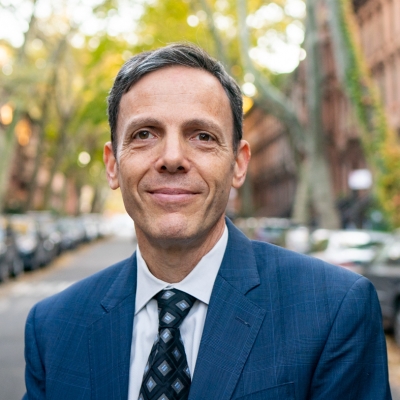Texas is back in education news. In late May, The 74 reported that the state education agency is proposing to supplement its existing English instruction with lessons that include Biblical references. Examples include explaining the Christian context underlying Leonardo DaVinci’s painting of The Last Supper and recounting the story of Queen Esther, as part of a second-grade unit about people who fought for a cause against great opposition, like Rosa Parks and Cesar Chavez.
Reactions to mentions of religion in the context of public education are sadly predictable. Progressives denounce efforts to “indoctrinate” impressionable youth and violate the First Amendment. Counter-reactions are equally predictable, as conservatives assert that denying the Judeo-Christian world view at America’s foundation is unpatriotic. Each side gets to motivate its base.
Lost in the political score settling is the fact that religious beliefs underlie most social and cultural developments. Music, art, literature, and philosophy all draw on and are rooted in religion. To make sense of the world and enjoy the active and engaged citizenship that our democracy requires, students must draw on this background knowledge. Using the Establishment Clause to bar religious content, even where it provides important context, harms students.
Imagine seeing DaVinci’s masterpiece and not knowing why these thirteen men had gathered to eat. Or singing “Go Down Moses” in chorus and having no idea where Moses went or why African American slaves identified with the story of the Exodus?
One element of America’s unique example to the world is our (at times fitful) acceptance of immigrants from different cultures and religions. But this openness, and our present diversity, don’t obviate the fact that the original English colonists were deeply religious dissidents who had fled England in search of the right to worship freely. Their language (think John Winthrop’s City on a Hill) and town names (Goshen, Canaan, and Hebron, to pick three from my native Connecticut) underscored their self-image as the new Israelites fleeing Pharoah and Egypt.
In Cultural Literacy, an education book that became a surprise best seller, E.D. Hirsch presciently observed that, “Although some modern secularists do not accept public religious expressions of any sort, and do not regard them as the necessary source of social bonding and civic virtue, their position has not been sustained by history.” If the founders didn’t hold some regard for a belief in God, Hirsch asked, how are we to make sense of Jefferson’s declaration that it is “self-evident” that all men are “endowed by their creator with certain unalienable rights?”
As civic beliefs evolve, they remain rooted in a shared culture, informed by religion. As an example, Hirsch cited Martin Luther King’s “I Have a Dream” speech, replete with references to The Declaration, the prophet Isaiah, and “My Country, ‘Tis of Thee.” Advocating for changes allowing “all of God’s children, Black men and White men, Jews and Gentiles, Protestant and Catholics” to join hands in freedom, King made multiple religious references.
In his Letter from Birmingham Jail, taught frequently in civil rights lessons, King famously wrote:
I am in Birmingham because injustice is here. Just as the eighth-century prophets left their little villages and carried their “thus saith the Lord” far beyond the boundaries of their hometowns; and just as the Apostle Paul left his little village of Tarsus and carried the gospel of Jesus Christ to practically every hamlet and city of the Greco-Roman world, I too am compelled to carry the gospel of freedom beyond my particular hometown. Like Paul, I must constantly respond to the Macedonian call for aid.
Try explaining that paragraph, or the myriad additional religious references in King’s letter, to students who are ignorant of the Bible, geography, or “the Greco-Roman world.”
Bible stories are a form of cross-cultural currency. When I was launching the International Charter School, a member of the nearby AME Church offered to help find space for our kids. “You should talk to Rev. Dr. Johnny Ray Youngblood, at Mt. Pisgah Baptist Church,” he said. “That’s your people,” he added, referring to the verse in Deuteronomy where God orders Moses to a mountain top from which he could look into the Promised Land.
Despite being filled with commandments, the Bible is not a writ. No credible politicians advocate for imposing it like a law. In my faith, digging deeper to understand the bible spawned an entire book, the Talmud, which catalogs centuries of rabbinic debates. American students who learn nothing of Moses, Egypt, Jesus, or the Galilee are bystanders in equally important civic discussions that draw on the religious beliefs of our founders and many of their fellow citizens.
Although 63 percent of Americans identify as Christian, a faith tied intimately to Judaism, our nation also includes 5 million Indians of diverse religious beliefs, and 3 million Muslims, whose beliefs are sometimes misrepresented by extremists from within and outside their community. Teaching American students, the vast majority of whom who will never have an Indian or Muslim classmate, the origin stories of these newer Americans serves to build understanding and compassion. Sikhs wear turbans; that does not make them Muslims. Factual knowledge of others’ beliefs can help heal our divisions. Ignoring them leaves students prone to propaganda.
One can question the motives of Texas’s leaders. At times their decisions appear to have been taken narrowly to ensure their continued political success. But what should we expect politicians to do but to act politically? Massachusetts Puritans disagreed with Pennsylvania Quakers—they executed three of them!—yet they eventually found common ground to forge a nation. At my diverse-by-design charter school, church-going children learned alongside classmates from avowedly secular families to the benefit of both.
Bible stories allow us to examine an inherently human phenomenon: the vexing, fascinating, ubiquitous fact of faith. Some argue that faith without factual foundation is just like today’s mulish insistence on creating one’s own political narrative. But there’s an important distinction: Religious faith exists in the absence of facts, not in contravention of them. Science has chipped away at religion, but believers still believe. There is room for subjectivity and a case for contemplation. Rather than ducking religion, we must teach it to build both cultural literacy and empathy, critical predicates for the kind of understanding so sorely missing from our national debate.
Editor's note: This article previously said that the full set of materials was not yet available. That has been corrected.




